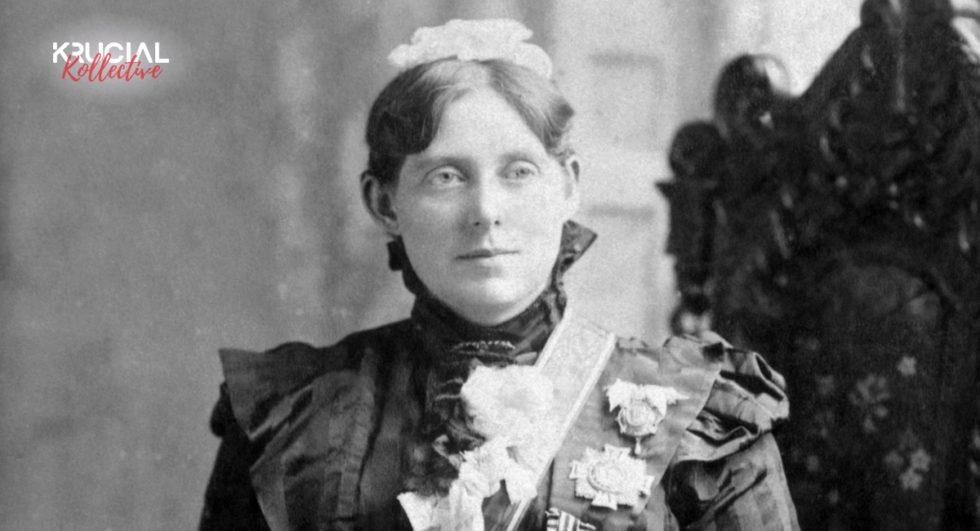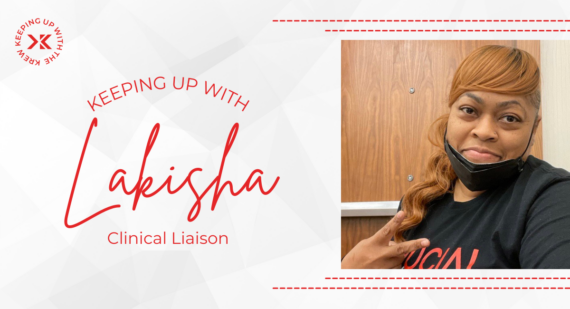
Five Women Who Have Changed Healthcare
By: Morgan Clark
Women have always been essential in healthcare, providing care for family and loved ones for centuries. As the medical field evolved with new scientific discoveries, the role, and importance of women being involved developed with it. For many years, women were looked down upon for pursuing a career in medicine, facing sexism from men and even members of their own sex. However, it was soon realized a woman’s perspective was critical in healthcare, especially regarding women’s health and resources.
In honor of Women’s History Month, we chose to spotlight five phenomenal women who broke the glass ceiling in the healthcare industry due to their passion for helping others.
Elizabeth Blackwell, M.D.
Dr. Elizabeth Blackwell was born on February 3, 1821, in Bristol, England. At the age of 17, her father, Samuel, moved the entire family to New York, eventually settling in Cincinnati, Ohio. Blackwell’s father was heavily involved in politics as an abolition activist, and unfortunately, passed away soon after their move to Cincinnati. To help with the finances, Blackwell plus her mother and sisters became private tutors, leading them to open a private school. After a dying friend of Blackwell’s bemoaned about not being able to see a female physician, Blackwell was inspired to study medicine, educating herself independently from other doctors. In 1847, Blackwell started to apply to medical schools, many of whom looked down on her for trying to nudge her way into a man’s environment. After applying and being rejected by many schools, she was accepted to Geneva Medical College in New York, but only as a joke. During her studies, she dealt with extreme sexism and was shunned as a “bad” woman for stepping outside a woman’s social role. Nevertheless, this did not deter her. Blackwell had the last laugh when she graduated as valedictorian in 1849, becoming the first woman to receive a medical degree. She went on to study in Paris and London, where she continued to experience misogyny from many medical professionals attempting to demote her to midwife. In 1851, she returned to New York City to open her own practice and provide care as a doctor, not a nurse. During this time of her life, Blackwell began to write The Laws of Life, with Special Reference to Girls’ Physical Education. Blackwell then moved her practice, where she could treat poor women and children. She was later joined by her sister and two other female doctors. During the Civil War, both Blackwell and her sister trained nurses in patient aid and the importance of sanitation. After the war, Blackwell helped open the Woman’s Medical College. She had strict criteria so each woman could pass the standard. In her later years, she moved back to England and became a professor of gynecology, and penned more medical works, including an autobiography, until her death in 1910.
Susan La Flesche Picotte, M.D.
Dr. Susan La Flesche Picotte was born in the June of 1865 to Chief Joseph (Iron Eyes) and his wife Mary (One woman) on Omaha Reservation. Unlike the other people on the reservation, her father pushed the whole tribe to assimilate, stating “It is either civilization or extermination.” This in turn led to La Flesche traveling to the Institute for Young Ladies in New Jersey for further education. (Smithsonian Magazine) She returned home after completing school and began to work at a Quaker school. Alice Cunningham Fletcher, a women’s rights activist, influenced La Flesche to return to school for medicine. She gained a scholarship with the help of Alice and attended Women’s Medical College of Pennsylvania (WMCP), where La Flesche graduated as valedictorian three years later in 1889. She was able to deliver newborns, tend to wounds, and treat diseases, but still was not able to vote because she was a Native American woman. She returned to her reservation and became a doctor for her entire tribe. In 1894, she married Henry Picotte and had two children. There she settled in Bancroft, Nebraska, and was able to open her own private practice treating her tribe members and Europeans. During this year, Susan also treated her sick mother and husband. In 1905, her husband passed away, but despite this devastation, she was able to build the first hospital on a reservation without any government funds. Eventually, Dr. Susan La Flesche Picotte became the only doctor for a reservation stretching over 1,350 square miles. She was able to treat up to 1,200 patients up until her death in 1915. Her hospital continued to serve the community as an elderly center until 1940.
Mary Seacole
Mary Seacole was born in Jamaica 200 years ago as a free woman due to her father’s Scottish heritage and her mother’s status as a free woman. Seacole grew up in a medical environment because of her mother, who treated the locals in their lodging house. There, Seacole was able to learn Jamaican medicine. Mary was known to have a wanderlust at an early age, Seacole began to travel, venturing to London to visit her relatives, then to Cuba, Haiti, and the Bahamas. Seacole eventually returned to Jamaica in 1826 as a nurse and began treating patients suffering from cholera and yellow fever. Although she was well sought out by locals, Seacole made a name for herself in the Crimea war. After a failing business in gold investment, Mary decided to join the nurses to help the soldiers of the Crimea War. Unfortunately, she was denied and it is speculated her skin color was the cause of her rejection. Instead of going back home, Mary joined forces with a relative to run the British Hotel a sanctuary for soldiers. Mary was able to serve the soldiers refreshments while waiting for transportation to the general hospital. She also tended to the wounded and comfort the dying soldiers. Because of the hotel’s location, Seacole’s was sometimes under fire. By the end of the war, she was known as “Mother Seacole” because she was so kind to her soldiers when she tended to them. After the war, Seacole returned home with little to no money, but she was praised for her work with the soldiers. In 1857, many of her admirers held a gala to fundraise money for her. According to the Mary Seacole Trust, up to 80,000 people were in attendance. Seacole was able to produce her autobiography “The Wonderful Adventures of Mrs. Seacole” before her death in 1881 in London. Even after her death, she was recognized for bravery and in 2016 a statue was placed in her honor at the St. Thomas’ Hospital on London’s Southbank.
Antonia C. Novello, M.D.
Dr. Antonia C. Novello was the first woman and Hispanic to become U.S. Surgeon General. Novello was influenced to pursue a career in medicine after suffering a medical condition called congenital megacolon, an abnormality of the large intestine. She endured the pain caused by the abnormality from the time she was young until 18 years old when her family could finally afford surgery. Novello received a scholarship to the University of Puerto Rico, where she earned her undergrad and medical degree, eventually graduating from there in 1970. She then continued her training in pediatrics at the University of Michigan; afterward, she performed her nephrology fellowship at Georgetown University. Novello spent two years as a pediatrician but decided to pursue a new direction in the public health field due to the emotional fatigue from working with sick children. This led to Novello earning her master’s degree in public health from Johns Hopkins University. Novello’s work with AIDS, the draft of legislation for the Organ Transplantation Procurement Act, and other campaigns gained the attention of the Bush party. President George H.W. Bush appointed Novello as the U.S. Surgeon General in 1990. During her term, she focused on the wellness of women, children, and minorities. Her most effective campaign was against the tobacco industry and its advertisements for children. She was also an advocate for safe sex during the AIDS epidemic. After her term, she became a clinical professor at Johns Hopkins University. Now, Dr. Novello is retired as Executive Director of Public Health Policy at Florida Hospital and resides in Orlando, Florida.
Florence Nightingale
Florence Nightingale is a world-renowned nurse and is also known as the “Lady with the Lamp” for her service in the Crimea War and for saving countless lives. She was born in 1820 to an affluent family and named after the city Florence, Italy, which her parents were visiting at the time of her birth. Nightingale received extensive education from her father growing up. At the age of 16, she knew she would be a nurse; in fact, she felt it was a divine calling. This did not go over well with her parents, who forbade her to pursue nursing. However, this did not stop her. In 1844, Nightingale registered herself for nursing school in Germany. After graduation, Florence returned home to an outbreak of cholera. In 1854, Nightingale received a letter from the Secretary of War asking her to gather nurses to help with the Crimea War. She gathered 38 nurses and arrived in Crimea a few days later at a filthy hospital, infested and dangerous for the troops. She had nurses and able-bodied soldiers scrub down every inch of that hospital. By the end of the war, she had established sanitation requirements, classrooms for patients, a laundry system, and a kitchen that catered to patients’ needs. She returned home as a hero with a cash prize equivalent to $250,000. With this money, she founded the Florence Nightingale Training School, which changed how nursing is today. Unfortunately, Nightingale was bedridden from never fully recovering from the “Crimean fever” but this never stopped her from directing her students. She continued to be heavily involved with her school. During the Civil War, she was looked to for consultation and advice on treating the soldiers. In 1908, King Edward rewarded her with honors for her influence in the medical field. Two years later, in 1910, she passed away in her home in London.
Each woman has left a legacy. Whether it was Florence Nightingale or Mary Seacole, women whose involvement in the Crimea War saved many lives, or Dr. Elizabeth Blackwell who was the first woman to receive an M.D.; these trailblazers inspired women to pursue their passion. Dr. Susan La Flesche Picotte, who became the first Native American woman to become a doctor and cared for an entire reservation, or Dr. Antonia C. Novello, who was in the highest position a doctor could hold – have molded and changed how women are seen in the medical field today. We will forever be indebted to their bravery and advocacy for women to be represented in healthcare.
Interested in contributing to the Krucial Kollective? Send us an e-mail at marketing@krucialrr.org and let us know what you would like to write!
Women have always been essential in healthcare, providing care for family and loved ones for centuries.




